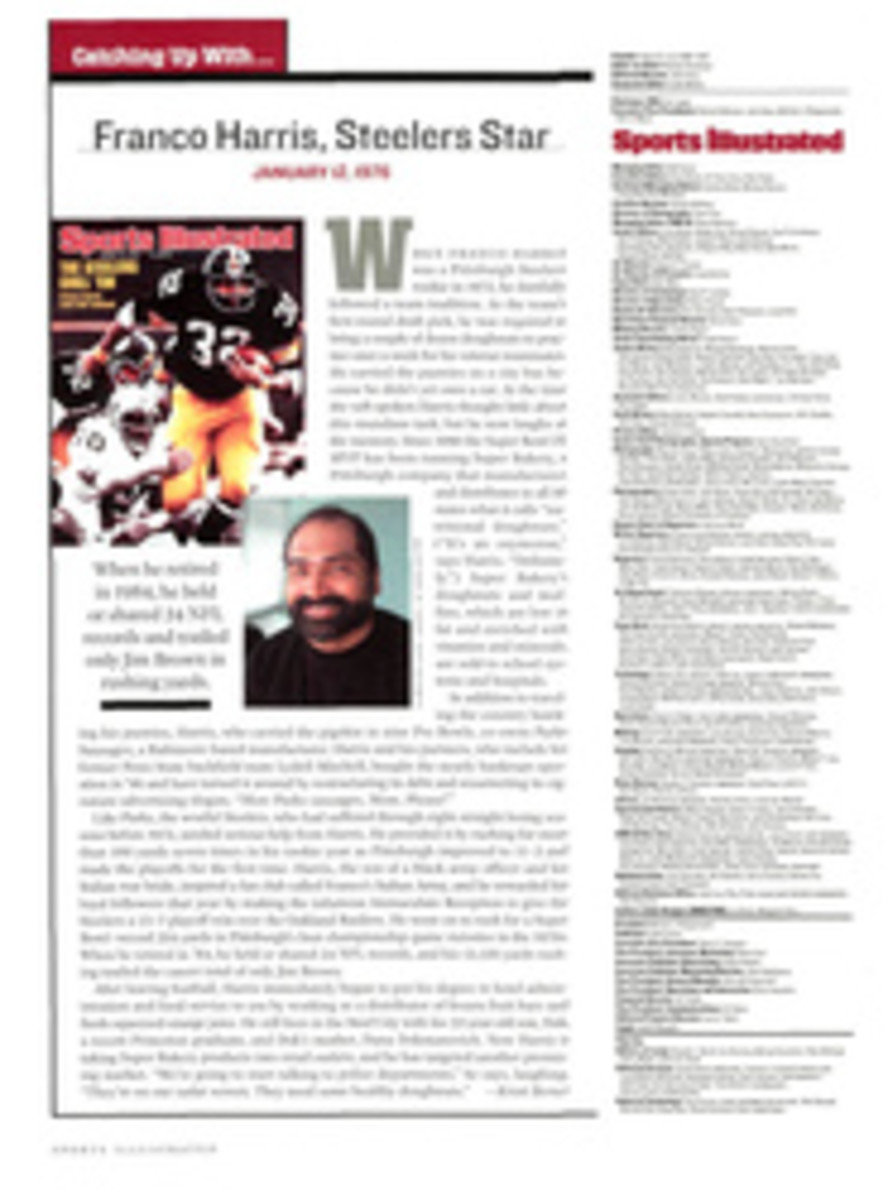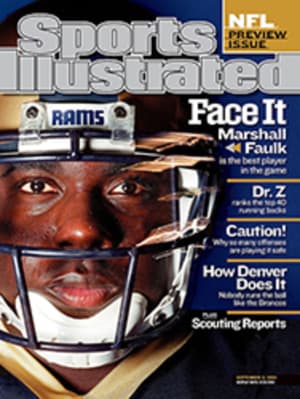
Where have All the Windsurfers Gone? It was the adventure sport of the 1980s. But now, sinking in popularity while its sister sport soars, windsurfing is trying to get a second wind
As competitors hauled their boards and tinkered with their cambers
before the first races at last week's U.S. Windsurfing National
Championships, the Beastie Boys' seminal album, Licensed to Ill,
blasted from the speakers. Echoing through Oregon's Columbia
River Gorge, the music was appropriate. Just as the Brooklyn
rappers were all the rage in the mid-1980s, so too was the sport
of windsurfing. Fifteen years later both barely register on the
Cool-o-Meter.
Though windsurfing has started to thrive again in Europe, in the
U.S. one could say that the wind has been taken out of the
sport's sails. According to the National Sporting Goods
Association, windsurfing participation in the United States
plummeted by 71.4% between 1995 and 2000. There were only
200,0000 Americans who got on a board more than once last year, a
substantial drop from more than a million during the mid-'80s.
What's more, the Professional Windsurfing Association (PWA) is in
a state of flux, wanting for sponsors and phasing out the racing
component in favor of more freestyle and wave competitions.
"Windsurfing is still a great, great sport, but for any number of
reasons we've been on the decline," says Doc Doolittle, a
competitive windsurfer who served as the emcee of the national
championships. "It's important for everyone in the sport who
cares about where it's going to get on the same page."
Last week's regatta--held near the town of Hood River at the
picturesque aperture in the Cascade Mountains where the
comingling of warm, easterly desert winds and cool, westerly
coastal winds often makes for ideal windsurfing conditions--was as
much a revival meeting as it was an occasion to anoint a new U.S.
champion. On the eve of the event the U.S. Windsurfing
Association held its annual meeting to discuss the state of the
sport. Representatives from board and sail companies were on
hand, several of them offering free introductory windsurfing
lessons to fans. Though there was no prize money, most of the top
U.S. pros made the pilgrimage to the so-called Mainland Maui for
the races. Even Mother Nature generally cooperated, exhaling
20-knot winds on Tuesday and Thursday. "It was a good week," says
Phil McGain, who was the event's overall champion, for which he
received a medal. "If all the events were this organized and
competitive, the sport would be a lot better off."
Still, the question swirls above the sport like the tradewinds:
Where did windsurfing go wrong? Much of the blame can be assigned
to those who marketed the sport after its initial surge in
popularity. Instead of promoting windsurfing as physically
challenging, environmentally sound and accessible to
practitioners at all levels, "wind snobs" played up the extreme
element. Television coverage and product brochures featured
acrobats negotiating mast-high swells in Maui and freestyle
daredevils executing midair sorcery in 30-knot winds.
It made for a macho image, but it scared off some beginners and
frustrated even skilled boarders. "I'd have friends who thought
they'd give windsurfing a try because they thought it looked
cool," says Matt Pritchard, 28, who finished fourth overall at
Hood River. "They didn't realize that not only do those tricks
take years to learn, but a lot of the time you need perfect wind
just to try them." This extreme extremism was particularly
alienating to women, who were already at a disadvantage in a
sport in which height and upper body strength are invaluable
assets. According to the most recent figures, only 16.7% of the
sport's participants are female; at Hood River all but three of
the 82 entrants were men. "It's a wonderful sport, and the
community is very welcoming," says competitor Susan Simmons, 53.
"But I can see how women would see guys doing loops and say,
'This isn't for me.'"
Manufacturers didn't help matters. While they didn't cease
production of beginner-level boards, companies, in an effort to
appease the daredevil contingent, put far greater emphasis on
sleeker, more aero- and hydro-dynamic boards that were
prohibitively expensive. "It's getting better, but for a long
time there were no poor windsurfers," says one pro. "Unless you
had $3,000 or $4,000 to spend off the bat [on the boards and the
equipment that goes with it], this sport wasn't for you."
More recently, the sport's popularity has been scuttled by
kitesurfing, a fast-growing windsurfing cognate that offers a
considerable element of thrill but with a near-vertical learning
curve--at about half the cost. Less subtle than windsurfing,
kitesurfing requires only modest gusts to launch its participants
into the air and to achieve speeds of up to 30 mph. Just as
lifelong skiers have been lured by the novelty appeal of
snowboarding, kitesurfers are typically former windsurfers who
have found a new and exciting outlet for their skills. "I'll
admit it, kitesurfing is a lot of fun," says former windsurfing
champion Alex Aguera, 40, who placed sixth overall at Hood River
but who also competes in kitesurfing events. "The buzz reminds me
of how windsurfing was when it was just catching on." Even
10-time windsurfing world champ Robbie Naish is a kitesurfing
convert. Living in Hawaii, Naish owns a company that is one of
the world's largest manufacturers of kitesurfing kites.
These forces have caused windsurfing to lose its balance, but the
sport is not about to faceplant quite yet. One reason is that
it's still flush with talented and charismatic U.S. pros like
Pritchard, McGain, Jimmy Diaz and Micah Buzianis, all of whom
competed at Hood River. The one glaring absentee was reigning
world champion Kevin Pritchard, Matt's younger brother, and he
had a passable excuse for his truancy. The 25-year-old
Californian was in Costa Rica, filming an upcoming episode of
Fox's "Temptation Island." Can these women remain faithful to
their boyfriends when they meet this buff windsurfing stud?
"Don't worry, we're going to give him plenty of s--- for it,"
says Matt. "On the other hand it will promote windsurfing, which
is always a good thing."
What will play a bigger role in the promotion of the sport is the
creation of the Formula Class, introduced last week for the first
time at the national championships. Previously, the top
windsurfers raced in the Open Class, which permits equipment of
all shapes, sizes and quantity. Owing to this laissez-faire
format, competition devolved into a de facto arms race. In other
words, those who had the wherewithal (read: sponsorship deals) to
race on customized boards and bring dozens of sails to events
would invariably win.
In the Formula Class, however, entrants must choose three sails
and three fins before the competition and race on a relatively
inexpensive, standardized "production" board that meets uniform
specifications. In much the same way PGA Tour officials have
regulated golf club and ball design to keep the playing field
level, so too are windsurfing officials determined to create
egalitarian events that place an emphasis on skill and not on
gear. (As an added bonus the wide production boards, readily
available at most windsurfing shops for between $1,400 and
$1,600, make it easier for novices to master the sport and sail
in lighter winds.)
The early returns from the Formula Class last week were
overwhelmingly positive. More than half the competitors at Hood
River--even many of the pros that own customized boards--opted out
of the open class and into the new class. Already there are plans
to launch a professional Formula racing circuit in the U.S. and
Puerto Rico beginning next year. "It's going to rejuvenate the
sport, the best thing that's happened to windsurfing in a long
time," says Matt Pritchard. "Before, you knew that the guys with
the deep pockets and the big sponsors were going to win. Now
anyone can compete."
Take Devon Boulon, for instance, a 19-year-old from the U.S.
Virgin Islands. Young, handsome and at 6'6", 208 pounds
perfectly built for the sport, Boulon is an ascending star. But
he's yet to have a breakthrough performance, leaving him still
in search of a major sponsorship. To defray the costs of
competing, he paints houses when he's not training. He was
doomed in Open Class, unable to keep pace with his sponsored
rivals. But racing in the Formula Class, he finished fifth
overall at Hood River.
In part because of his brightened prospects in Formula racing,
Boulon decided to forgo college, instead relocating to Maui from
the Virgin Islands. With access to Maui's "way better wind,"
Boulon has been able to sharpen his freestyle and wave skills as
well as his racing technique. But he couldn't catch McGain, who,
even in modest wind, planed on the calm Columbia at speeds
eclipsing 30 mph. Like a jazz musician, the 16-year pro trusted
his instincts and nimbly negotiated the labyrinthine
two-to-three-mile courses, tacking away from the pack only to
reemerge with a sizable lead. "The younger guys may have more
energy and athleticism," says McGain, 38, who won six of the
week's nine races. "But experience counts for a lot. I'm not
going away anytime soon."
Perhaps with the success of last week's competition, his sport
can say the same.
COLOR PHOTO: PHOTOGRAPH BY ROBERT BECK Breezing McGain sailed to victory at last week's national championships, which used a new format designed to revive the sport.
COLOR PHOTO: PETER STERLING/OI2.COM New wave Able to generate thrills in only modest winds, kitesurfing is stealing away windsurfers.
COLOR PHOTO: PETER STERLING/OI2.COM Wrong turn By marketing its daredevil image, windsurfing scared off novice boarders and unwittingly trimmed its own sales.
"I'll admit it, kitesurfing is a lot of fun. The buzz reminds me
of how windsurfing was when it was just catching on."

